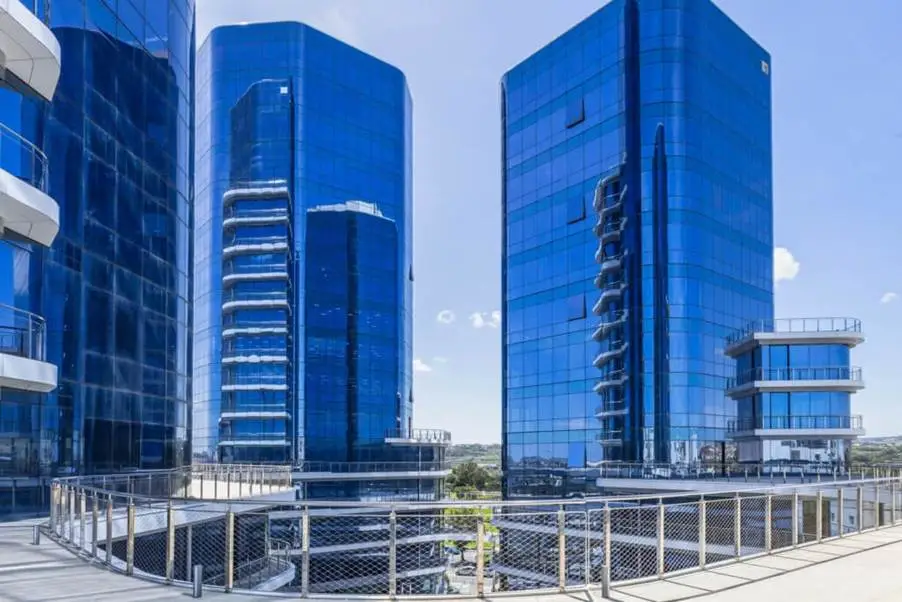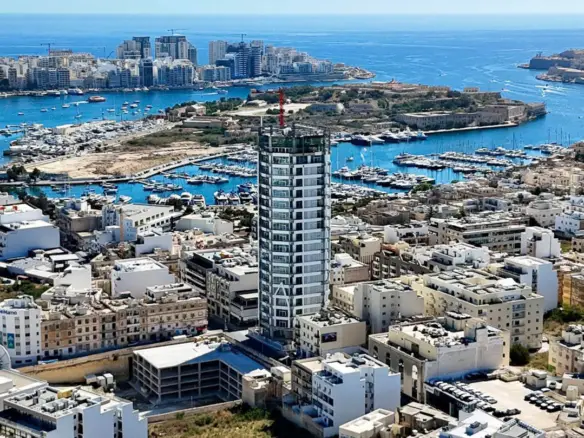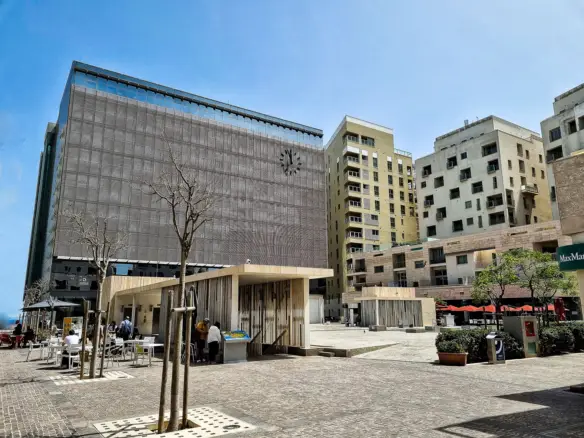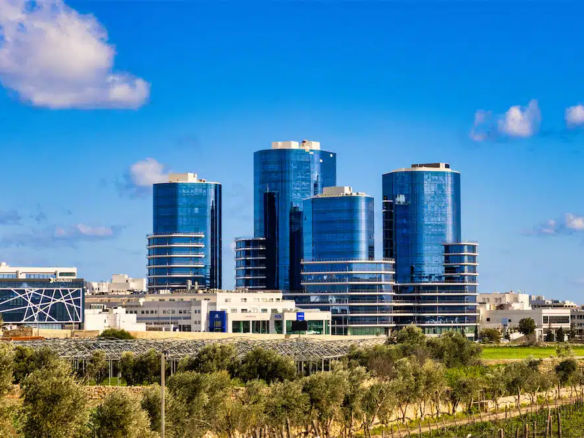Malta continues to strengthen its reputation as a business-friendly hub. With a stable regulatory environment, English as an official language and a rising demand for office space, companies are actively relocating or expanding here. The key now is identifying not just the traditional premium locations but the emerging zones where value, accessibility and business infrastructure align. Below are five locations that are gaining traction in 2025 for office leases and relocations — each offering distinct advantages depending on business size, budget and client-profile.
1. Sliema: The Hub of Business and Lifestyle

Sliema remains one of Malta’s most in-demand commercial addresses. Positioned along the waterfront with strong amenities and connectivity, it attracts firms that combine client-facing operations with staff comfort.
Key trends in 2025:
- Leasing demand remains robust for high-spec office space with sea-views and quality finishes.
- The location facilitates a premium brand image: accessibility, transport links, and lifestyle amenities (cafés, restaurants, leisure) make it appealing for talent recruitment and retention.
- Rental premiums are still pronounced compared with less central zones, but the value proposition (branding + talent pull + connectivity) remains strong.
Why businesses are moving here:
- Direct access to public transport (ferrys, bus routes) and close proximity to the central business belt.
- High visibility and foot-traffic – particularly suitable for consultancies, fintech firms, professional services.
- An established ecosystem that already supports international operations, enabling smoother onboarding and expansion.
Considerations:
- Higher cost per square metre, and availability of large contiguous spaces (for 50+ staff) may be constrained.
- Parking and traffic can be more challenging than suburban locations.
- For businesses focused purely on cost-efficiency (rather than brand/talent), alternatives may offer better value.
2. St. Julian’s: From Entertainment Zone to Business District


Historically known for leisure and hospitality, St. Julian’s is rapidly evolving into a credible business zone — especially catering to tech, iGaming and service-oriented companies.
Key trends in 2025:
- Repurposing of hotel/entertainment-adjacent space into high-spec offices.
- The influx of international firms has raised expectations for quality finishes, backup power systems, and hybrid work readiness.
- Strong appeal among young professionals seeking vibrant locations that combine work and social life.
Why businesses are moving here:
- The vibrant, cosmopolitan environment supports talent attraction and retention.
- Proximity to international hotels, transport hubs and hospitality infrastructure makes hosting clients easier.
- Good value relative to the most prime seafront zones, while still offering prestige.
Considerations:
- Night-time leisure traffic and events may affect congestion or noise in some micro-zones.
- For firms needing ultra-quiet corporate environments, further inland locations might be more suitable.
- While infrastructure is strong, dedicated business-park style campuses are less common than in fully established business districts.
3. Gżira: Central, Affordable and On the Rise

Gżira has emerged as a compelling alternative for businesses seeking central Malta office placement without the top-tier price tag.
Key trends in 2025:
- Growing volume of modern developments offering flexible floorplans and serviced office models in Gżira.
- Popularity among financial-services start-ups, tech firms and SMEs making the most of central location and relative affordability.
Why businesses are moving here:
- Central Malta positioning reduces commute times for staff across multiple localities.
- Competitive rental levels compared to coastal premium locations.
- Good quality office stock emerging and upgrading, so companies don’t need to compromise significantly on infrastructure.
Considerations:
- While rapidly improving, the locality may still lack the same brand-prestige of Sliema or St. Julian’s for certain high-visibility businesses.
- Limited large-floor-plate space may restrict firms planning major expansion.
- Parking and external amenity options may lag slightly behind premium zones.
4. Ta’ Xbiex: Marina Views & Executive Address



Ta’ Xbiex is carving out a niche as a prestigious office location: elegant, well-connected, and with a distinctive waterfront and diplomatic character.
Key trends in 2025:
- Office relocations of law firms, financial consultancies and premium service providers wanting a standout address.
- Modern refurbishments of older stock to align with ESG expectations and hybrid work needs.
Why businesses are moving here:
- A strong brand image facilitated by marina frontage, embassies and high-end residential neighbourhoods.
- Suitable for firms with client-visits, international focus, and those wanting prestige rather than simply cost-efficiency.
- Close enough to central business zones yet sufficiently distinct to command a premium.
Considerations:
- Rental levels tend to be higher due to premium location and finish.
- Might not be ideal for large-scale operations primarily focused on backend functions where cost is the overriding driver.
- For staff commuting from more central zones, travel might be slightly more constrained than more central nodes.
5. Mrieħel: Industrial Legacy Turned Business District



Mrieħel — once known for industrial units and logistics — is now gaining momentum as a value-driven business district with large floor-plates and transport advantages.
Key trends in 2025:
- Increasing number of corporate headquarters, mid-sized companies and back-office operations relocating to Mrieħel, taking advantage of cost-efficient space and good connectivity. MaltaOffices.com+1
- Infrastructure upgrades (road, fibre connectivity) improving the locale’s attractiveness for modern office use.
Why businesses are moving here:
- Larger spaces at more competitive rental costs allow for expansion and flexibility — especially for companies with 100+ staff.
- Easy access to major road arteries, and less congestion than the most central zones.
- Good for manufacturing-adjacent operations, shared services centres, and firms comfortable with a business park feel rather than premium seafront aesthetics.
Considerations:
- It lacks the glamour or lifestyle prestige of coastal zones, which may matter for talent recruitment or client-facing firms.
- Amenity density (cafés, leisure, waterfront views) is lower compared to Sliema or St. Julian’s.
- Visibility may be less for firms wanting ‘brand address’ rather than functional space.
Rental Rates by Location (2025)
In the Maltese office space market for 2025, rental rates vary significantly depending on location, building quality, floor plate size and amenities.
Here are indicative annual rental price ranges per square metre by area in Malta:
Central Malta (general): ~ €190/m² (average)
Central zone (e.g., Mrieħel & Naxxar): €130-€220/m²
North East (Sliema & St. Julian’s): €230-€600/m²
Harbour area (Valletta & Floriana): €150-€300/m²
West & South (e.g., Qormi, Luqa): €100-€180/m²
Emerging micro-location: Mosta – average ~ €190/m², with individual quotes from €140-€220/m²
Emerging Micro-Locations Beyond Top Five
Birkirkara
Birkirkara stands out as a centrally-located business zone in Malta. Office space here benefits from strong connectivity and accessibility. Current listings show that average office rental rates are around €166 per m² per annum. Here’s why Birkirkara is worthy of inclusion:
- More affordable than the coastal premium zones, yet still central and well-connected.
- Suitable for SMEs or regional functions that prioritise cost-efficiency without sacrificing accessibility.
- A range of office types available, including smaller units (e.g., 120 m² at €1,200/month) that provide scalability.
Mosta
Mosta offers a compelling alternative to the more expensive business districts. While full average rental data is less precise, available listings suggest a strong value proposition.
Why include Mosta:
- A “central island” location with improved connectivity but lower rental expectations than waterfront zones.
- Suitable for offices that don’t require a prestige marine front but still demand good infrastructure and commuting access.
- Listings for modern offices (e.g., 170 m² for ~€1,700/month) indicate viable alternatives for mid-sized teams.
Mrieħel (Central Business District Growth Zone)
Although already featured among your top five, Mrieħel deserves special emphasis as a transformational business node. Developments such as the four-tower complex The Quad showcase how the district is evolving.
Key points:
- Offers large floor plates (e.g., 400 m²+) and modern design aimed at medium to large businesses.
- Competitive rental rates relative to seafront areas, combined with scale and infrastructure. For example: a 275 m² space listed at €5,844/month.
- Ideal for firms looking for expansion room, efficient layouts and a less congested location than the most central zones.
Final Thoughts
In 2025, Malta’s office market is characterised by active recovery and growing demand. According to industry data, leasing activity rose significantly in 2024 and momentum is expected to continue into 2025. Each of the five locations above has a clear value-proposition tailored to different business needs:
- Sliema and St. Julian’s deliver premium addresses, lifestyle appeal and brand prestige.
- Gżira offers centrality with relatively lower cost and growing infrastructure.
- Ta’ Xbiex provides an elevated address for exec-level, client-facing operations.
- Mrieħel suits companies with expansion, space and cost-efficiency as primary drivers.
When choosing your location in Malta, consider the following decision-factors:
- Size and growth plan: Will you need contiguous space for 50 + staff in 2–3 years?
- Brand/visibility vs cost: Is having a prime waterfront address essential for your business model or is internal function more important?
- Talent attraction and commute: Proximity to where your staff live, ease of transport, parking availability.
- Amenities and infrastructure: Fibre connectivity, hybrid-work readiness, café/retail nearby, waterfront/leisure options.
- Future flexibility: Will you require expansion, sub-firm-downsizing, or flexible leases?



